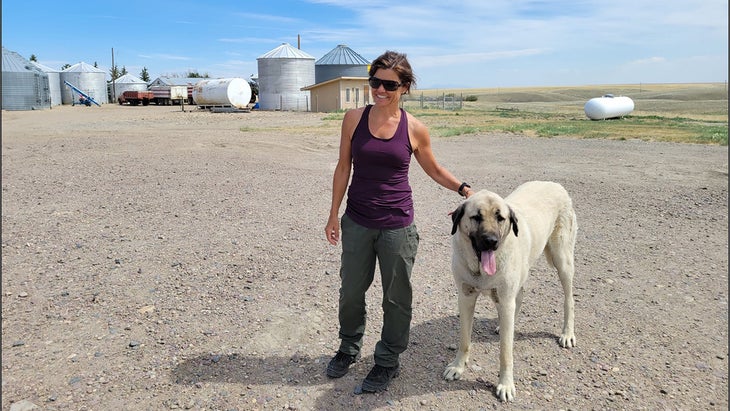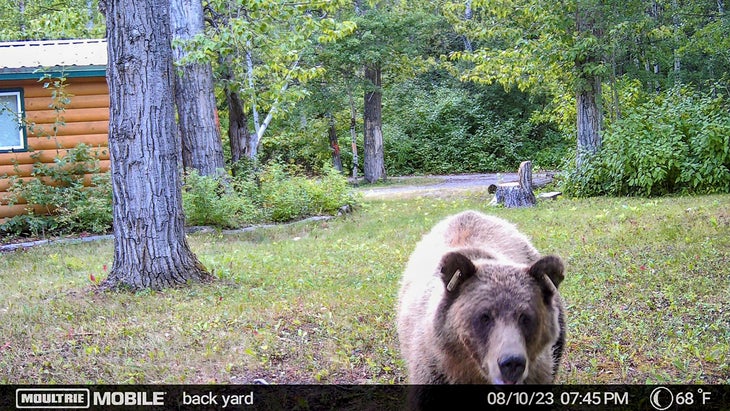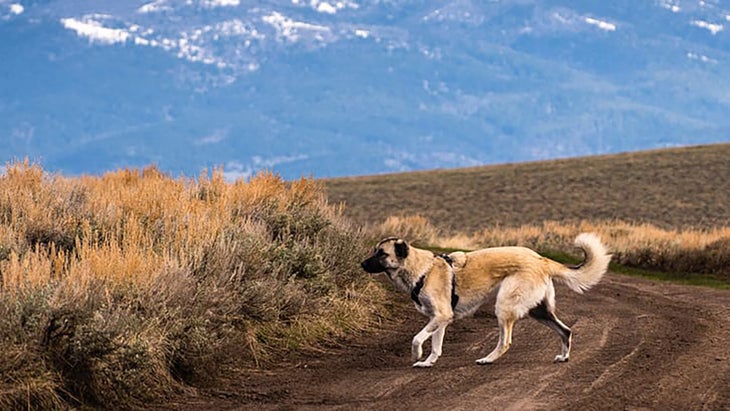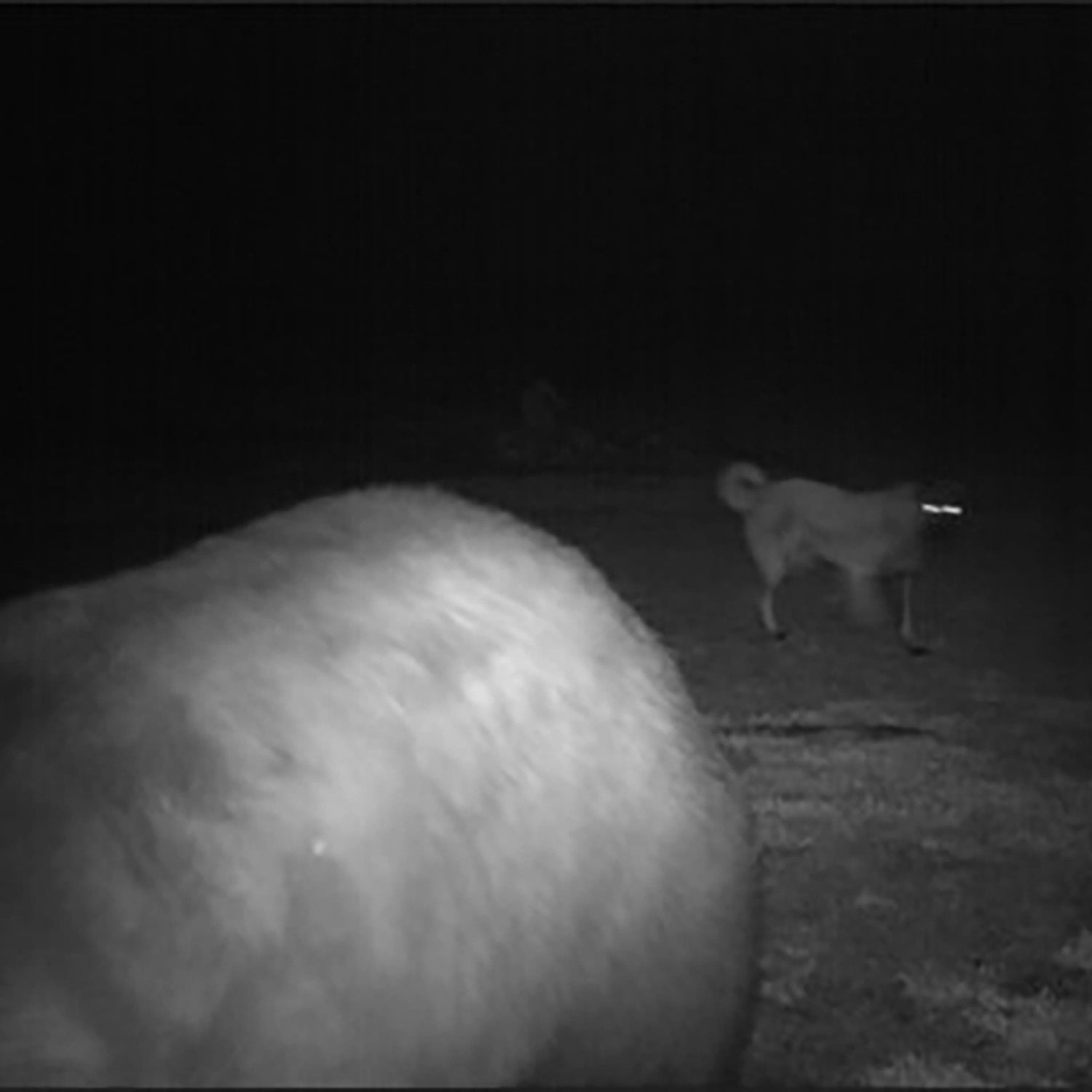Think your trusty dog is no match for a ferocious grizzly bear? Turns out the simple presence of a livestock guardian dog can reduce visits from grizzly bears by 87.8 percent, according to . That result should be encouraging to anyone who lives near expanding grizzly populations in the Northern Rockies or, according to the researcher responsible for the study, those of us recreating in grizzly habitat, too.
“Humans have relied on dogs for protection from wild animals for thousands of years for a reason,” says Julie Young, the Utah State University wildlife scientist who conducted the research alongside Montana Fish, Wildlife, and Parks. “They work.”
Young’s study placed five livestock guardian dogs (LGDs) at four farmsteads in northern Montana with “a chronic history of bears accessing grains and other attractants next to their homes,” and kept dogs away from five similar farmsteads as a control.
When I talk about using my dogs to ward off or potentially fight a bear, I’m often met with skepticism. Surely even a 125-pound ancient livestock guardian dog like Teddy couldn’t take on a 500-pound-plus griz, right? So I also asked Young to explain that dynamic. “It’s like watching two frat boys shout ‘Hold me back, bro,’” she illustrates. Both species avoid physical altercations through instinct. A dog’s scents, barking, and presence are enough to force most bears to turn tail.
Since grizzly populations in the lower 48 states gained Endangered Species Act protections in the seventies, their number has grown to Bear populations are largely split between the ecosystems surrounding Yellowstone and Glacier national parks. As the bears go looking for new habitat, they’re traveling east, onto the prairies where they historically thrived before the arrival of European settlers. That’s bringing the species into conflict with humans in new areas, threatening both their survival, and the safety of human families in places that, until a few years ago, never had to think about coexisting with large apex predators.
The result? “There were 58-fold fewer camera-trap detections of bears visiting farmsteads with LGDs and an increase in behaviors suggesting bear discomfort compared to paired [control farmsteads],” the study found. “After LGDs were deployed, there was an 87.8 percent reduction in GPS-collar locations of bears within 300 meters of farmsteads relative to before.”
Most importantly, no bears, humans, or dogs had to be harmed to achieve those results. “The bears simply avoided the farms with dogs,” Young explains.
Young believes this revelation could impact the safety of humans as well. She’s studied interactions between LGDs and large predators before. But that research focused on the ability of livestock guardian dogs to protect herds. To her, the big question here was whether or not the same behaviors and result could be applied to families and their physical property—not just sheep and goats.
“The farmers were worried that the dogs might be aggressive toward their children,” says Young.

Young selected the canine breed Kangals for the study. These dogs are a purebred line of the Anatolian Shepherd, an ancient livestock guardian breed from Turkey. Kangals are the most athletic of the giant breeds, and reportedly highly aggressive.
Young explains that she chose the Kangal because, it “is an ancient breed specifically bred to guard against large predators.” Great Pyrenees and Akbash, which are common on western farms, are not. The researcher says that contrasts the strengths of what she calls, “the generic white dog,” which is more commonly used to protect against smaller predators like coyotes.

This is where the study becomes relevant to me and my family. Six years ago, we adopted a rescue puppy that we thought was a mutt, but turned out to be a pure-bred Kangal. We split time between Bozeman, in southwest Montana, and a family cabin in northern Montana. Grizzly bears are an ever-present fact of life at that cabin. We frequently come across their tracks and signs elsewhere. In addition to a layered security protocol runs from limiting attractants to heavy-caliber firearms, we rely on our dogs to keep us safe.
I want to shoot a bear even less than I want to get my face torn off by one, and Teddy, our Kangal, is an important part of preventing either event from occurring.
“We know that Kangals can bond with shepherds,” says Young. And now, with evidence from this new research, we also know that they not only bond with families, their farms, and children, but that those farmers like having the dogs around as well.
“All four farms chose to keep the Kangals, and are recommending them, too,” says Young. “Famers in the control group are also now seeking out the dogs.”
The study’s results builds on the findings of other research. Young compared the effectiveness of Kangals to other livestock guardian dog breeds , while found the breed reduced livestock losses to big cats by 91 percent. indicated that Kangals bonded more strongly with humans than sheep.

I asked Young if these results could be applied to our cabin and our camping trips. “Paired with other measures, dogs can be a successful tool at deterring bears in any setting,” she said. Young went on to explain that the study will give wildlife officials working in the field the evidence they need to bring dogs along with them for grizzly protection.
So there you have it: Scientific evidence that, unlike bear spray, a dog with significant guarding instincts is effective at deterring the largest land predator in the world. That should help reduce conflicts with humans as the species continues to expand into its historic habitat. If you do everything else right, a dog can be an additional tool for avoiding grizzly bears the next time you recreate in the places they call home.


